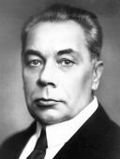| | First party | Second party | Third party |
|---|
| |  |  |  | | Leader | Matti Paasivuori | Pekka Heikkinen | Kyösti Haataja |
|---|
| Party | SDP | Agrarian | National Coalition |
|---|
| Last election | 29.02%, 60 seats | 20.25%, 44 seats | 18.99%, 38 seats |
|---|
| Seats won | 60 | 52 | 34 |
|---|
| Seat change |  |  8 8 |  4 4 |
|---|
| Popular vote | 257,572 | 205,313 | 161,450 |
|---|
| Percentage | 28.30% | 22.56% | 17.74% |
|---|
| Swing |  0.72pp 0.72pp |  2.31pp 2.31pp |  1.25pp 1.25pp |
|---|
| | | Fourth party | Fifth party | Sixth party |
|---|
| |  | |  | | Leader | Eric von Rettig | | Oskari Mantere |
|---|
| Party | RKP | STPV | National Progressive |
|---|
| Last election | 12.03%, 23 seats | 10.45%, 18 seats | 9.09%, 17 seats |
|---|
| Seats won | 24 | 20 | 10 |
|---|
| Seat change |  1 1 |  2 2 |  7 7 |
|---|
| Popular vote | 111,005 | 109,939 | 61,613 |
|---|
| Percentage | 12.20% | 12.08% | 6.77% |
|---|
| Swing |  0.17pp 0.17pp |  1.63pp 1.63pp |  2.32pp 2.32pp |
|---|
|
|






